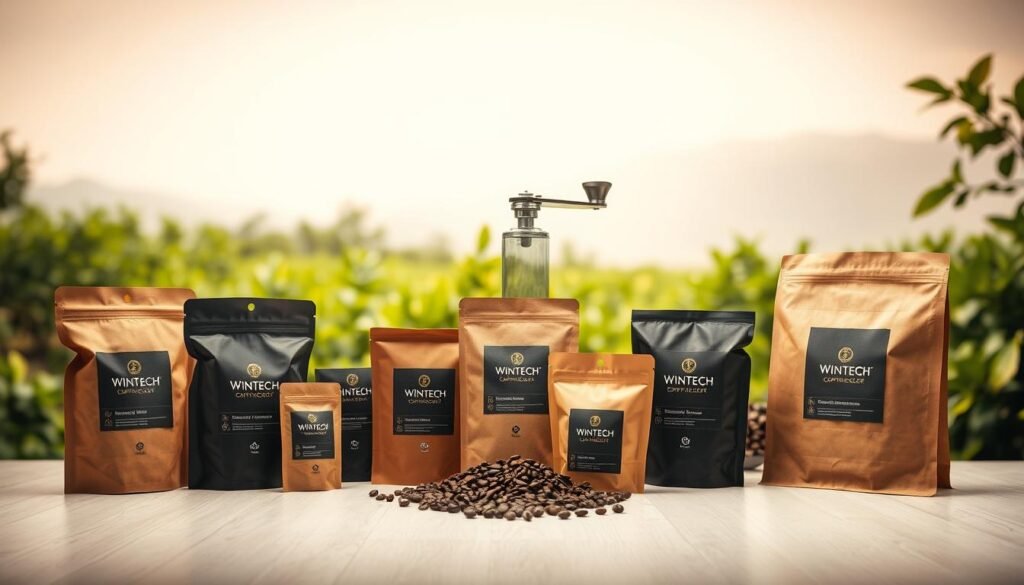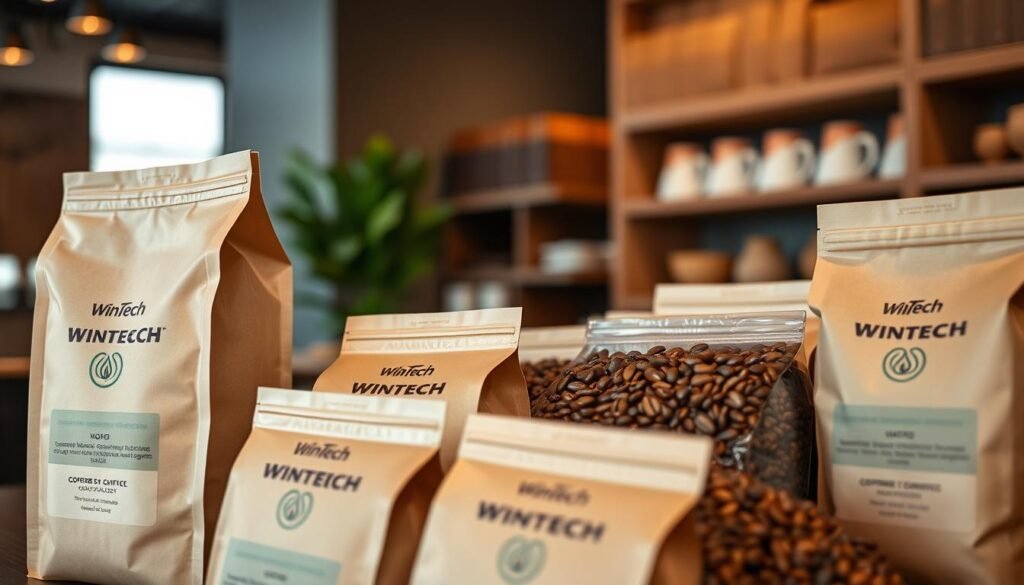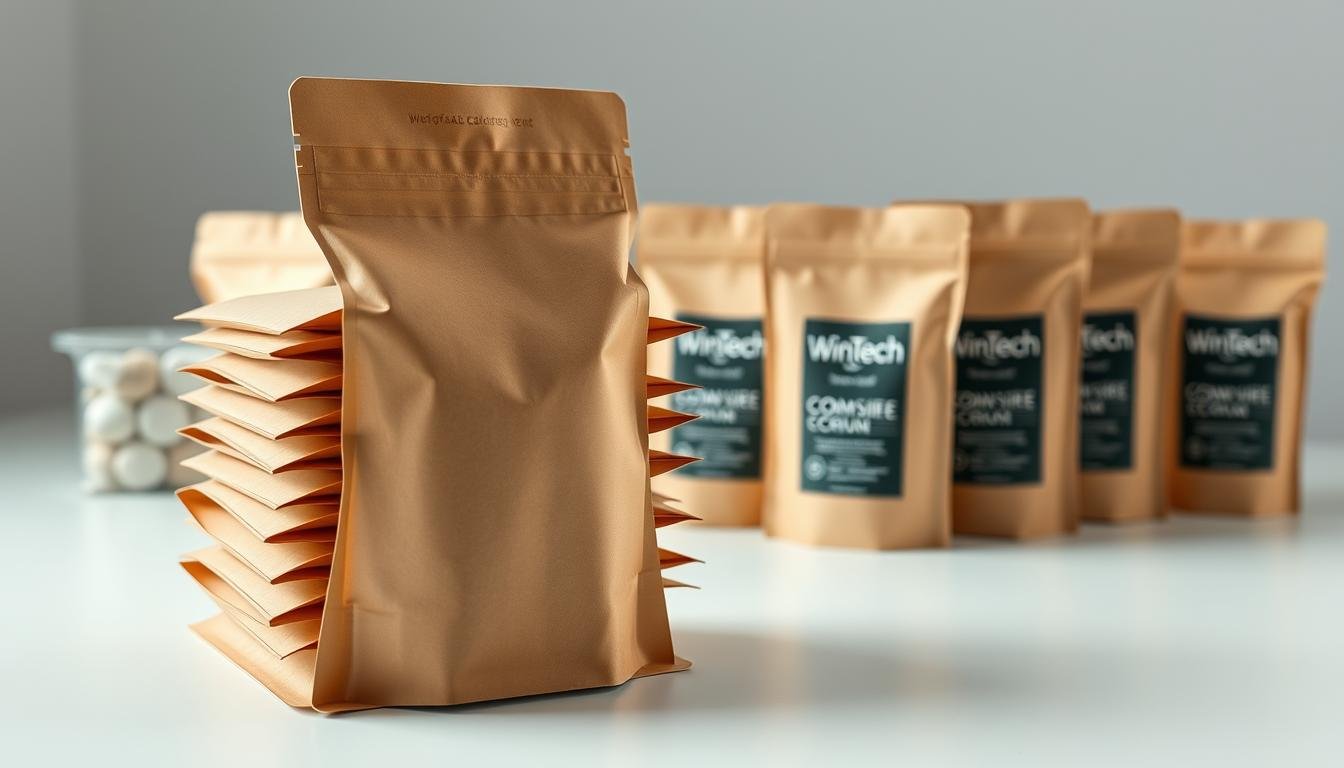Have you ever wondered how the packaging of coffee beans impacts both your morning brew and the planet’s health? The world of sustainable coffee packaging materials is undergoing a remarkable transformation that could change everything you know about your favorite morning ritual.
In the United States, coffee lovers are increasingly demanding sustainable coffee packaging that preserves flavor while protecting the environment. Wintech packaging of coffee beans is leading this revolution, developing innovative solutions that address critical challenges in the packaging of coffee beans.
Modern coffee producers face a complex challenge: creating packaging that maintains coffee’s delicate flavor profile while minimizing environmental impact. Traditional packaging of coffee beans methods often compromise either product quality or ecological sustainability.
Compostable high-barrier films represent a breakthrough in packaging of coffee beans. These advanced materials offer superior protection against moisture, oxygen, and light – the primary enemies of coffee freshness – while simultaneously reducing waste and supporting environmental conservation efforts.
Key Takeaways
- Sustainable packaging of coffee beans is crucial for product quality and environmental protection
- Compostable materials provide excellent barrier properties for coffee preservation
- Innovation in coffee packaging materials can significantly reduce ecological footprint
- Consumer demand is driving sustainable packaging solutions
- Advanced packaging techniques can maintain coffee flavor and freshness
Understanding the Importance of Packaging of Coffee Beans
Coffee lovers know that the journey from bean to brew is critical. The packaging of coffee beans plays a crucial role in preserving the delicate flavors and aromas that make each cup special. Your coffee’s quality depends significantly on how it’s protected from external elements.

Protecting coffee’s essence requires sophisticated packaging strategies. Vacuum sealed coffee bags have revolutionized how roasters maintain product quality. These specialized containers create a protective barrier that shields delicate beans from moisture, oxygen, and light degradation.
The Role of Packaging in Preserving Flavor
Freshness preservation is the ultimate goal of advanced packaging techniques. Degassing valve technology has become a game-changer in the packaging of coffee beans. These innovative valves allow carbon dioxide to escape while preventing oxygen from entering the package.
- Prevents flavor loss
- Maintains bean integrity
- Extends shelf life
Environmental Considerations in Packaging
Modern consumers demand sustainable solutions in coffee packaging. Roasters are increasingly exploring eco-friendly materials that balance protection with environmental responsibility. The packaging of coffee beans now focuses on reducing waste while maintaining optimal bean quality.
| Packaging Type | Freshness Retention | Environmental Impact |
|---|---|---|
| Traditional Bags | Low | High Waste |
| Vacuum Sealed Bags | High | Moderate |
| Compostable Packaging | Medium | Low Impact |
Innovative Materials for Coffee Bean Packaging
Cutting-edge research continues to develop new packaging solutions. High-barrier films and advanced sealing technologies are transforming how roasters protect their precious beans. Your choice of packaging directly impacts the final coffee experience.
Advantages of Using Compostable High-Barrier Films in the Packaging of Coffee Beans
Specialty coffee roasters are increasingly recognizing the critical importance of sustainable packaging solutions. Wintech Package leads the way in developing innovative packaging of coffee beans that protect both product quality and environmental integrity.

Sustainable coffee packaging represents a game-changing approach for modern coffee businesses. By selecting advanced compostable high-barrier films, you can revolutionize your whole bean packaging options while maintaining exceptional product freshness.
Enhanced Freshness and Shelf Life
Specialty coffee storage demands precision. Compostable high-barrier films offer remarkable benefits:
- Extended product shelf life up to 12 months
- Superior moisture and oxygen protection
- Preservation of complex coffee flavor profiles
“Innovative packaging is the silent guardian of coffee’s exquisite taste.” – Coffee Industry Experts
Benefits of Compostable Materials
Modern consumers value environmentally responsible brands. Compostable packaging solutions provide significant ecological advantages:
- Reduced carbon footprint
- Minimal environmental waste
- Support for circular economy principles
Cost-Effectiveness of Sustainable Packaging
Contrary to common misconceptions, sustainable packaging can be economically smart. By investing in advanced compostable films, you’ll realize long-term financial benefits through:
- Reduced material waste
- Enhanced brand reputation
- Potential customer loyalty increases
Wintech Package demonstrates that sustainable packaging is not just an environmental choice, but a strategic business decision.
Implementing Sustainable Practices in the Packaging of Coffee Beans
Transitioning to sustainable packaging for coffee beans requires a strategic approach that balances environmental responsibility with product quality. Your coffee packaging journey begins with understanding the critical elements that make compostable solutions effective. Modern roasters recognize that the packaging of coffee beans goes beyond mere protection—it’s about creating an eco-friendly experience that resonates with environmentally conscious consumers.
When evaluating airtight coffee containers, focus on materials that preserve bean freshness while minimizing environmental impact. Brands like Wintech Package offer innovative solutions that protect your product’s integrity. Consider upgrading your packaging machinery to accommodate new compostable film technologies. Staff training becomes crucial in this transition, ensuring your team understands the nuanced requirements of sustainable packaging methods.
Steps to Transition to Compostable Packaging
Start by conducting a comprehensive audit of your current packaging workflow. Analyze your existing materials, production processes, and waste generation. Select compostable materials that maintain the same barrier properties as traditional packaging. Pay special attention to coffee roast date labeling, which plays a vital role in communicating product freshness and quality to your customers.
Collaborating with Sustainable Suppliers
Develop partnerships with suppliers committed to sustainable innovation. Look for manufacturers who can provide transparent supply chain information and demonstrate measurable environmental improvements. Your choice of packaging partner can significantly impact your overall sustainability goals and brand reputation in the competitive coffee market.
Measuring Packaging Impact
Implement robust tracking mechanisms to quantify your sustainability efforts. Calculate reduced carbon footprint, waste reduction, and potential cost savings from sustainable packaging solutions. Share these metrics with your customers to build trust and demonstrate your commitment to environmental stewardship in the packaging of coffee beans.

